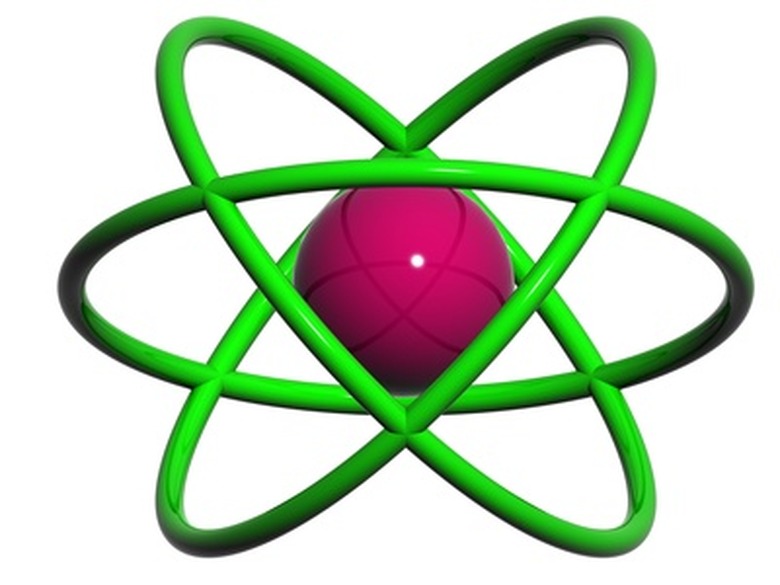Everything on Earth is made up of atoms and studying atoms is an important part of science. Knowing how to draw an atomic model can increase understanding of how atoms work. Atoms play a role in all areas of scientific inquiry, so drawing a model of an atom is a useful skill for understanding atoms. There are two main parts to drawing a model of an atom. The first part is the nucleus, which contains two types of particles, protons and neutrons. The second part is adding the electrons in the shells around the outside of the nucleus.
Nucleus
Step 1
Find the atomic number of the element of the atom you want to draw. You can find this above the element name or symbol in the periodic table. This number corresponds to the number of protons in your nucleus. Helium, for example, has an atomic number of 2, which means it has two protons.
Step 2
Find the atomic weight of your element. You can find this underneath the element name in the periodic table. Subtract the atomic number from this atomic weight to work out the number of neutrons in your atom. Helium has an atomic weight of 4, which means it has two neutrons.
Step 3
Draw the nucleus of your atom in the center of your page or workspace. The nucleus contains the protons and neutrons. Draw these as small circles tightly clustered together. Imagine how a raspberry or blackberry looks. This is similar to the appearance of the nucleus, with each spherical piece of the raspberry or blackberry representing a proton or neutron. Draw a “+” symbol in the protons to indicate their positive charge. Draw four particles tightly packed next to each other for a helium atom: two protons and two neutrons.
Electrons
Step 1
Find out the shell structure of your atom. Shells represent the orbits of electrons around the outside of the nucleus. A shell structure tells you how many electrons are in each shell around the nucleus.It is different for every element, and you can find the shell structure of your atom using the chart in the “Resources” section at the bottom of this page.
Step 2
Draw circles around the outside of your nucleus using a pair of compasses. Draw one circle to represent one shell, and leave a space between each circle. Your atom should now look like a bullseye target, with the nucleus being the bullseye in the center, and each electron shell representing a ring of the target.
Step 3
Add electrons to your shells. Draw a small circle to represent one electron, and place a “-” symbol inside it to represent the electron’s negative charge. Each atom has the same number of electrons as it does protons, so a helium atom has two electrons.

